Table of Contents
Although many people think that peanuts are nuts, they are legumes. As they have almost the same characteristics as nuts, they are an excellent dietary supplement with many positive effects. You will learn about the important characteristics of peanuts and why you should include them in your diet in this article.
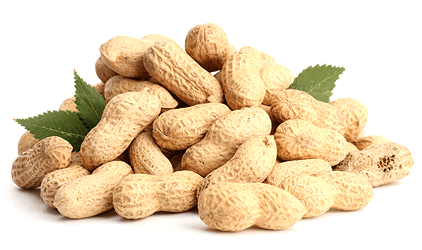
A plant that does not grow in nature
Peanuts are mainly cultivated in tropical and subtropical zones. [1] We say cultivated because peanuts do not grow in the wilds at all. It is a legume whose teats grow similarly to potatoes – underground. [2] Peanuts are believed to have originated somewhere around Peru where they were first domesticated. Currently, the largest peanut producers are China (37%), Africa (25%) and India (21%). [3]
Composition and nutritional values of peanuts
Table 1: Vitamin content in 30 g portion of peanuts [4]
| energy value | 773,4 kJ |
| calories | 184,84 kcal |
| proteins | 7,74 g |
| carbohydrates | 5,454 g |
| of which sugars | 1,86 g |
| fats | 14,67 g |
| of which saturated fatty acids | 2,775 g |
| of which monosaturated fatty acids | 6,943 g |
| of which polyunsaturated fatty acids | 4,048 g |
| fibre | 2,265 g |
| water | 1,971 g |
| calcium | 20,85 mg |
Benefits of peanuts and their impact on human health
1. Decrease the level of bad cholesterol
Peanuts contain a lot of monounsaturated fatty acids, such as oleic acid, which prevents coronary heart diseases. The vascular constriction caused by fat deposits limits blood flow to the heart. As a result, the vascular blockage may manifest as a heart attack. [5] Peanuts also reduce bad LDL cholesterol and increase good HDL cholesterol. [6]
2. Promote growth and healthy human body development
They are rich in protein and the amino acids present in peanuts promote proper body growth and development. [7]
You might be interested in these products:
3. Reduce the risk of stomach cancer
Peanuts contain a large number of polyphenol antioxidants. Β-coumaric acid limits the production of carcinogenic nitrates and thus reduces the risk of gastric cancer. [8]
4. Improve memory
Niacin, also called vitamin B3, which contains peanuts, helps to improve brain activity while improving memory. [8]
5. Protect the skin
Vitamin E is also present in peanuts to help maintain integrity between mucosal cells and skin. By this peanuts protect the skin from free radical damage. [8]
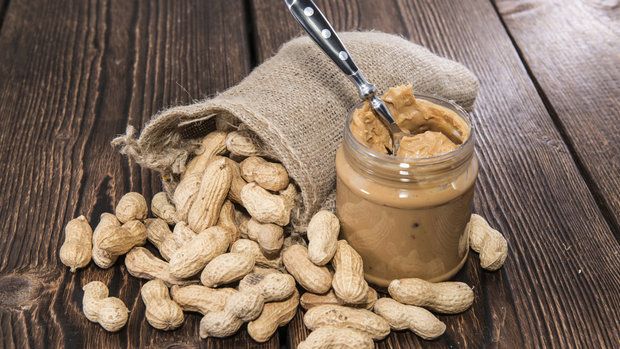
6. Help fight heart diseases, viruses and nerve diseases
Resveratrol, a natural polyphenol antioxidant present in peanuts, prevents heart disease, cancer, nerve and viral diseases, but also infections. [9] Resveratrol is a controversial substance, the effects of which some scientific studies have shown positive results [10], while others question it. [11]
7. Contain vitamin B complex and lots of minerals
Groundnut contains a variety of vitamins B (niacin, riboflavin, thiamine, vitamin B6, B9 and pantothenic acid) [4] and minerals (potassium, manganese, copper, calcium, magnesium iron, selenium and zinc), which play an important role in the human body. [12]
8. Reduce the risk of gallstones in women cases
One 30 g portion of peanuts (or two tablespoons of peanut butter) can reduce the risk of gall bladder disease (cholecystectomy) and gallstones by up to 25% per week. The research that produced this finding ran from 1980 until 2000 and involved more than 80,000 women. [13]
9. Positive effect on the treatment of depression
In addition to external stimuli, depression is also caused by internal ones – such as low serotonin levels. Peanuts contain tryptophan, which helps to release serotonin, increase its value and prevent depression. [8]
10. Help prevent colon cancer
Regular consumption of peanuts (at least 2 tablespoons of peanut butter twice a week) can reduce the risk of colon cancer by up to 58% in women. Research has not failed to examine also men, to who peanuts can help reduce the risk of this disease by 27%. [14]
11. During pregnancy, they reduce the risk of neural tube failure in children
Abundant amounts of folic acid in peanuts can reduce the risk of birth of a child with neural tube failure by up to 70%. It is sufficient if young women consume at least 400 micrograms of folic acid daily during pregnancy, but also before it. [8] [15] [16]
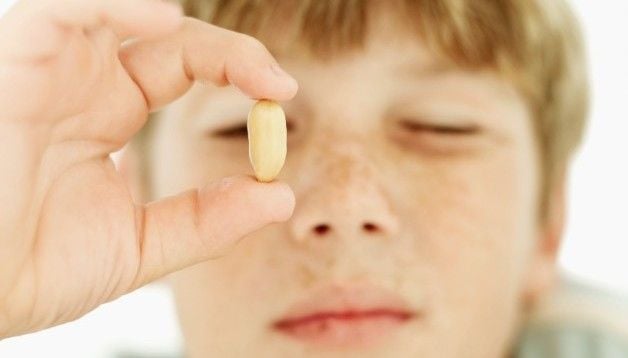
12. Help with weight loss
According to scientific studies, people consuming peanuts on a regular basis better maintain their body weight and BMI. In addition, peanuts reduce the risk of obesity. [17] [18] [19] [20] A study in which peanuts were administered as a substitute for other sources of fat showed a loss of 3 kg after more than six months. [21] As peanuts give a feeling of fullness more than any other type of food, people can reduce their actual intake. This also results in reduced body weight. [22]
Allergies and side effects of peanuts
Peanuts are considered to be one of the most common food allergens and, in extreme cases, can cause life-threatening allergic reactions in some people. [23] People suffering from peanut allergy should avoid it and should not consume other products containing peanut (for example, peanut butter).
The solution of widespread allergy to peanuts may be serving them to children from the age of four months. According to a study in 2016, babies who started to consume peanuts between the ages of four and six months are less likely to develop allergies by up to 70%. [24] However, this is different for children whose siblings suffer from these allergies. In the case of these children, the risk of developing peanut allergy is higher and a doctor’s advice is recommended. [25]
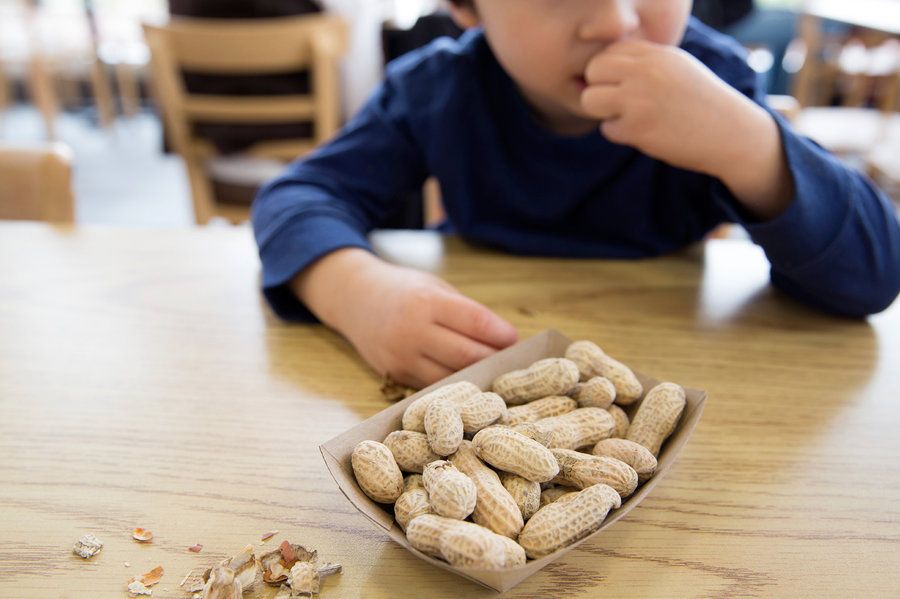
Peanuts also contain so-called antinutritional substances. One of them is phytic acid, which is 0.2 to 4.5% in peanuts and it is also found in other legumes, cereals, nuts and seeds. [26] Phytic acid interferes with the absorption of minerals from the gastrointestinal tract, so over-consumption of peanuts may eventually lead to iron and zinc deficiency. [27]
Peanut oil is refined and cleaned of allergic substances. Studies have shown that most people allergic to peanuts can consume peanut oil. This finding does not apply to cold-pressed oils, which may still be as dangerous to allergy sufferers as peanuts alone. [28]
Use of peanuts
Peanuts are really universal. They are rich, so in case of unexpected hunger, they can serve as a quick delicacy and a substitute for unhealthy food. Once you know the positive effects of peanuts, you do not have to categorise them “something small to eat,” but you can easily upgrade them to a full-bodied legume in your diet.
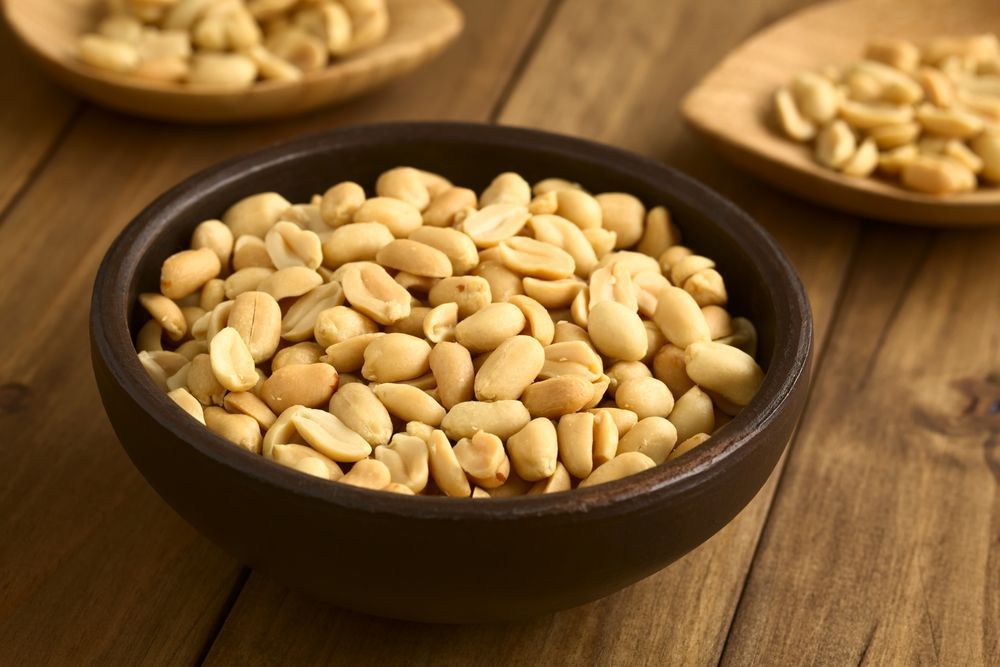
Due to their high protein content, peanuts are processed into different forms – peanut butter, peanut flour or oil. While peanut butter does not need to be presented to anyone, the flour is a few words. It is used for the production of cereal bars, various bakery mixes and confectionery products for toppings. Peanut oil is used for cooking and preparing various dishes. Raw peanuts are a very popular supplement especially in Asian cuisine, where it is used as a part of soups, sauces and salads. Crushed peanuts can be used at home in addition to the above-mentioned options to decorate desserts or to make something tasty for breakfast. It will surely fill you up until lunchtime.
Peanuts are a perfect source of protein, vitamins and minerals. In addition to being used as a healthy form of fat in diets, they reduce the risk of gallstones, heart diseases, and colon cancer. Like everything else, peanuts should be consumed to a certain extent. Refill your peanut stores and see their positive effects on your skin.
Of course, by eating and not applying to the skin. If you liked the article and you think it might be helpful also to your friends, please support it by sharing.
[1] U.S. National Plant Germplasm System. Arachis hypogaea L. – https://npgsweb.ars-grin.gov/gringlobal/taxonomydetail.aspx?id=3785.
[2] Hymowitz, T. Grain Legumes. 1990. – https://www.hort.purdue.edu/newcrop/proceedings1990/V1-154.html
[3] FAOSTAT. Production and trade data for groundnuts (peanuts). 2013. – https://faostat3.fao.org/browse/Q/QC/E
[4] Kalorické tabulky – Ořechy a semena. – https://www.kaloricketabulky.cz/pochoutky/orechy-a-semena/
[5] Únia pre zdravšie srdce. Koronárna choroba srdca. 2013. – https://www.presrdce.eu/srdcovocievne-ochorenia/koronarna-choroba-srdca
[6] Emekli-Alturfan, E. Peanuts improve blood glutathione, HDL-cholesterol level and change tissue factor activity in rats fed a high-cholesterol diet. – https://www.ncbi.nlm.nih.gov/pubmed/17989913
[7] Singh, B., Singh, U. Peanut as a source of protein for human foods. 1991. – https://pdf.usaid.gov/pdf_docs/pnabk316.pdf
[8] Arya, J. Food is your Medicine. 2014. – https://books.google.sk/books?id=jxQHBAAAQBAJ
[9] Sales, J., M., Resurreccion A., V. Resveratrol in peanuts. 2014. – https://www.ncbi.nlm.nih.gov/pubmed/24345046
[10] Yang, X., Li, X., Ren, J. From French Paradox to cancer treatment: anti-cancer activities and mechanisms of resveratrol. 2014. – https://www.ncbi.nlm.nih.gov/pubmed/24851878
[11] Semba R., D., a kol. Resveratrol levels and all-cause mortality in older community-dwelling adults. 2014. – https://www.ncbi.nlm.nih.gov/pubmed/24819981
[12] Settaluri, V., S., a kol. Peanuts and Their Nutritional Aspects: A Review. 2012. – https://www.academia.edu/6010023/Peanuts_and_Their_Nutritional_Aspects_A_Review
[13] Tsai, C., J., Leitzmann, M., F., Hu, F., B., Willett, W., C., Giovannucci, E., L. Frequent nut consumption and decreased risk of cholecystectomy in women. 2004 – https://www.ncbi.nlm.nih.gov/pubmed/15213031
[14] Yeh, C., C., You, S., L., Chen, C., J., Sung, F., C. Peanut consumption and reduced risk of colorectal cancer in women: a prospective study in Taiwan. 2006. – https://www.ncbi.nlm.nih.gov/pubmed/16482621
[15] Health and Human Services. Folic Acid: The Public Health Perspective.
[16] Lynn, B., a kol. Folic Acid Supplements and Fortification Affect the Risk for Neural Tube Defects, Vascular Disease and Cancer: Evolving Science. 2003.
[17] Moreno, J., P., a kol. Peanut consumption in adolescents is associated with improved weight is_active. 2013. – https://www.ncbi.nlm.nih.gov/pubmed/23827129
[18] Mattes, R., D., a kol. Impact of peanuts and tree nuts on body weight and healthy weight loss in adults. 2008. – https://www.ncbi.nlm.nih.gov/pubmed/18716179
[19] Bes-Rastrollo, M., a kol. Prospective study of nut consumption, long-term weight change, and obesity risk in women. 2009. – https://www.ncbi.nlm.nih.gov/pubmed/19403639
[20] Hu, F., B., Stampfer, M., J. Nut consumption and risk of coronary heart disease: a review of epidemiologic evidence. 1999. – https://www.ncbi.nlm.nih.gov/pubmed/11122711
[21] O’Byrne, D., J., Knauft, D., A., Shireman, R., B. Low fat-monounsaturated rich diets containing high-oleic peanuts improve serum lipoprotein profiles. 1997. – https://www.ncbi.nlm.nih.gov/pubmed/9252956
[22] Alper, C., M., Mattes, R., D. Effects of chronic peanut consumption on energy balance and hedonics. 2002. – https://www.ncbi.nlm.nih.gov/pubmed/12119580
[23] Burks, A., W. Peanut allergy. 2008. – https://www.ncbi.nlm.nih.gov/pubmed/18456104
[24] Ierodiakonou, D., a kol. Timing of Allergenic Food Introduction to the Infant Diet and Risk of Allergic or Autoimmune Disease: A Systematic Review and Meta-analysis. 2016. – https://jama.jamanetwork.com/article.aspx?articleid=2553447
[25] Kaclík, G. Deti by mali jesť vajíčka a arašidy čím skôr, nebudú mať alergie. 2016. – https://tech.sme.sk/c/20284179/deti-by-mali-jest-vajicka-a-arasidy-cim-skor-nebudu-mat-alergie.html
[26] Schlemmer, U., Frølich, W., Prieto, R., M., Grases, F. Phytate in foods and significance for humans: food sources, intake, processing, bioavailability, protective role and analysis. 2009. – https://www.ncbi.nlm.nih.gov/pubmed/19774556
[27] Lopez, H., W., Leenhardt, F., Coudray, Ch., Remesy, Ch. Minerals and phytic acid interactions: is it a real problem for human nutrition? 2002. – https://onlinelibrary.wiley.com/doi/10.1046/j.1365-2621.2002.00618.x/abstract
[28] Food Allergy and Research Education. About food allergies. – https://www.foodallergy.org/living-food-allergies/food-allergy-essentials/common-allergens/peanut.
